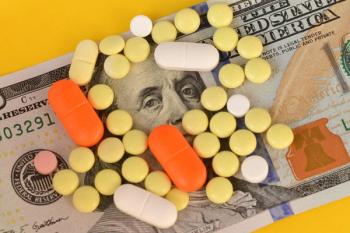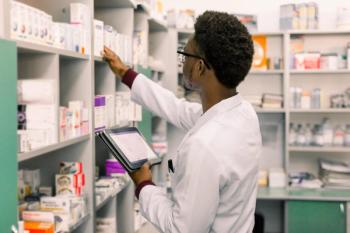
Q&A: Pharmacy Desert Improvement Reliant on Industry Advocacy, Reform
Michael Murphy, PharmD, MBA, provided insights on his research regarding pharmacy deserts, who they impact the most, and the methods needed to improve them in the US.
While pharmacy deserts in the US significantly impact pharmacies and the pharmacists that facilitate them, the lack of medication services in respective areas of the country is more of a community problem. With the many financial pressures pharmacy businesses encounter, experts believe that industry advocacy that leads to reform is the best way to progress forward on this issue.
“It's really important that we make sure that it's well understood that this is not a pharmacy problem,” Michael Murphy, PharmD, MBA, assistant professor of clinical pharmacy at the Ohio State University College of Pharmacy and advisor for state government affairs at the American Pharmacists Association, told Drug Topics. “This is a problem that moms and dads face, that members of your community face, to just get access to their medications.”
READ MORE:
In part 2 of our interview with Murphy, he discussed the current state of the pharmacy industry in the US, touching on how nationwide events can have significant consequences for patients and pharmacies. Whether it’s the current scrutiny of pharmacy benefit managers (PBMs) or debates regarding pharmacists’ scope of practice, Murphy believes the industry is truly at an inflection point, with pharmacy deserts arising as one of the most prominent challenges.
Read on to learn more from Murphy’s insights on pharmacy deserts, and stay tuned for more content from our interview with him as he dives deeper into the pressures that lead to pharmacy closures.
Drug Topics: What is the current state of pharmacy deserts in the US and what direction is this trend headed in?
Michael Murphy: I want to start off by just making sure that it's clear, because I feel like when we talk about this issue, we talk a lot about pharmacists and pharmacies. It's really important that we make sure that it's well understood that this is not a pharmacy problem; this is a community problem. This is a problem that moms and dads face, that members of your community face, to just get access to their medications. While this is an issue impacting pharmacies and pharmacists, I really want to make sure it's clear that this is a patient issue in making sure that they have access to medications in a local, accessible, and convenient way.
What's really concerning is that pharmacy deserts are growing, and they're growing quickly. Now, nearly 1 in 7 Americans are living in an area with limited access to a pharmacy. That's typically in an area like a rural or low-income area or a historically underserved area. We see folks that are at higher socioeconomic risk are [also] at higher risk of living in a pharmacy desert, which means you have lower access to your medications and to the medical advice of a pharmacist.
A few recent studies have come out that are showing and really exemplifying how quickly we're seeing this change occur. A recent study showed, between 2010 [and] 2021, nearly 30% of pharmacies nationwide closed. Then, just in Ohio where I'm located, we've seen a 19% drop in retail community pharmacies since 2015. This is an issue that is really impacting all corners of our country and is really concerning to see so many patients across the country lose access to that trusted health care professional and the convenient, accessible way that they access their medications.
Drug Topics: Amid increased pharmacy deserts, attempts at reigning in PBMs, and so much more ongoing in pharmacy, do you believe the pharmacy industry is at a turning point? If so, where do you think it ends up in the near future, especially in regard to pharmacy deserts?
Michael Murphy: I read this idea one time in a book, Good to Great, and it really resonated with me. It was an idea that in order for us to move forward, to progress, we have to accept our current reality. We have to really take stock of where we are now, and then we can identify what we need to do to move forward. Where we are right now as the pharmacy profession, we are at an inflection point. We are at a critical juncture, and we can go in 1 of 2 directions. We can continue to see pharmacies close and patients will have challenging situations. But I believe pharmacists, pharmacies, and patients can effectively advocate to our policymakers at the state and federal level. We can get the reforms passed that we need to see happen to ensure that we are working within our health care system, not to put profits for big organizations and companies over the lives of patients, and ensure that our local health care establishments like pharmacies are able to stay open and continue to serve the patients in their community.
I hope, in the next couple of years, that we see those policies pass and get adopted, so that we stop seeing pharmacy deserts continue to expand across the country, and we start seeing more pharmacies, especially in those underserved areas, start to reopen and provide those additional patient care services that patients are really coming to appreciate and admire that their pharmacist can provide. While I might feel a little bit pessimistic at times right now, I've got a really positive approach on where I think that the pharmacy profession is going to go here in the next few years. It's just going to take a lot of individuals advocating for the changes that they want to see.
READ MORE:
Ready to impress your pharmacy colleagues with the latest drug information, industry trends, and patient care tips? Sign up today for our
Newsletter
Pharmacy practice is always changing. Stay ahead of the curve with the Drug Topics newsletter and get the latest drug information, industry trends, and patient care tips.





























































































































